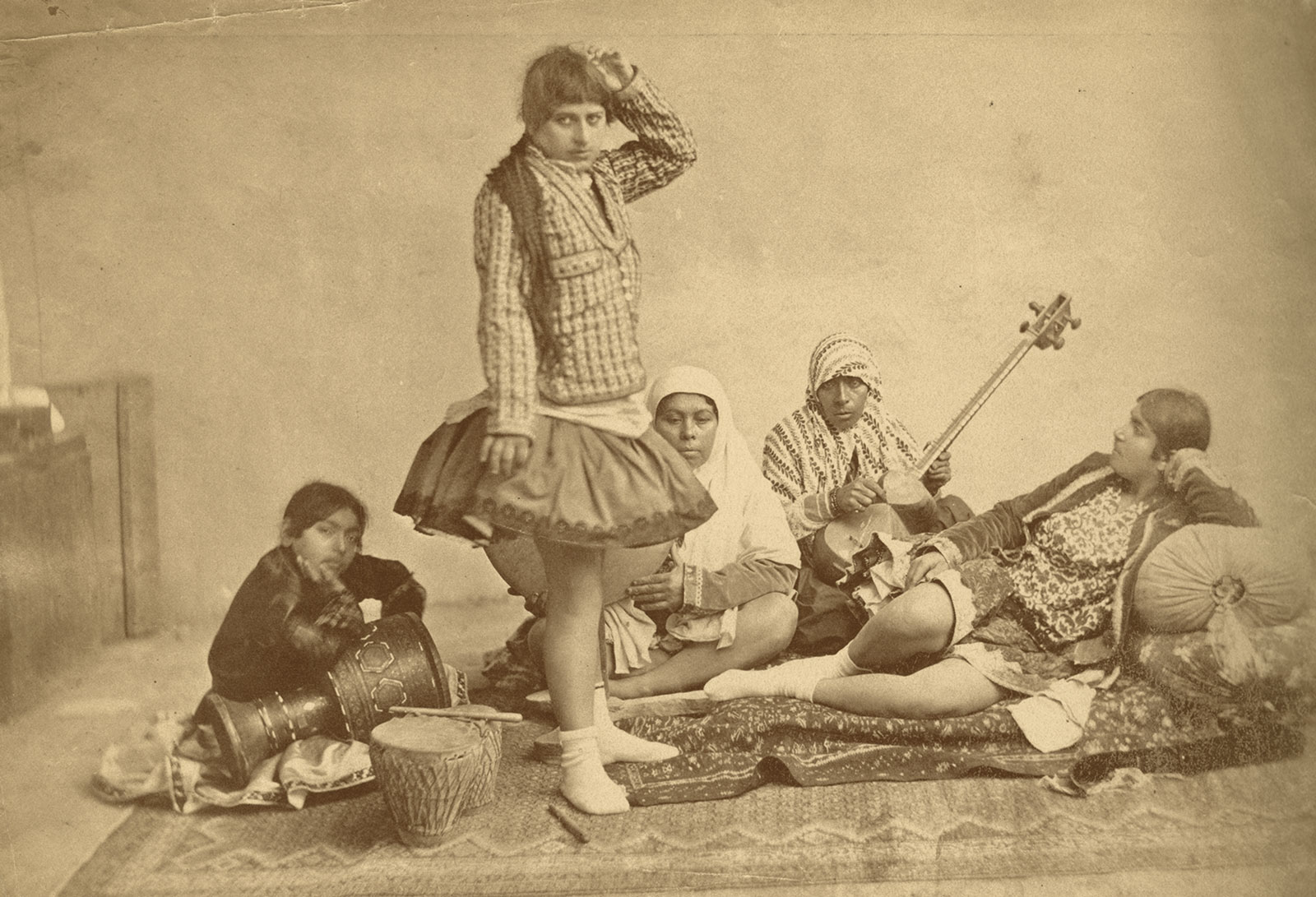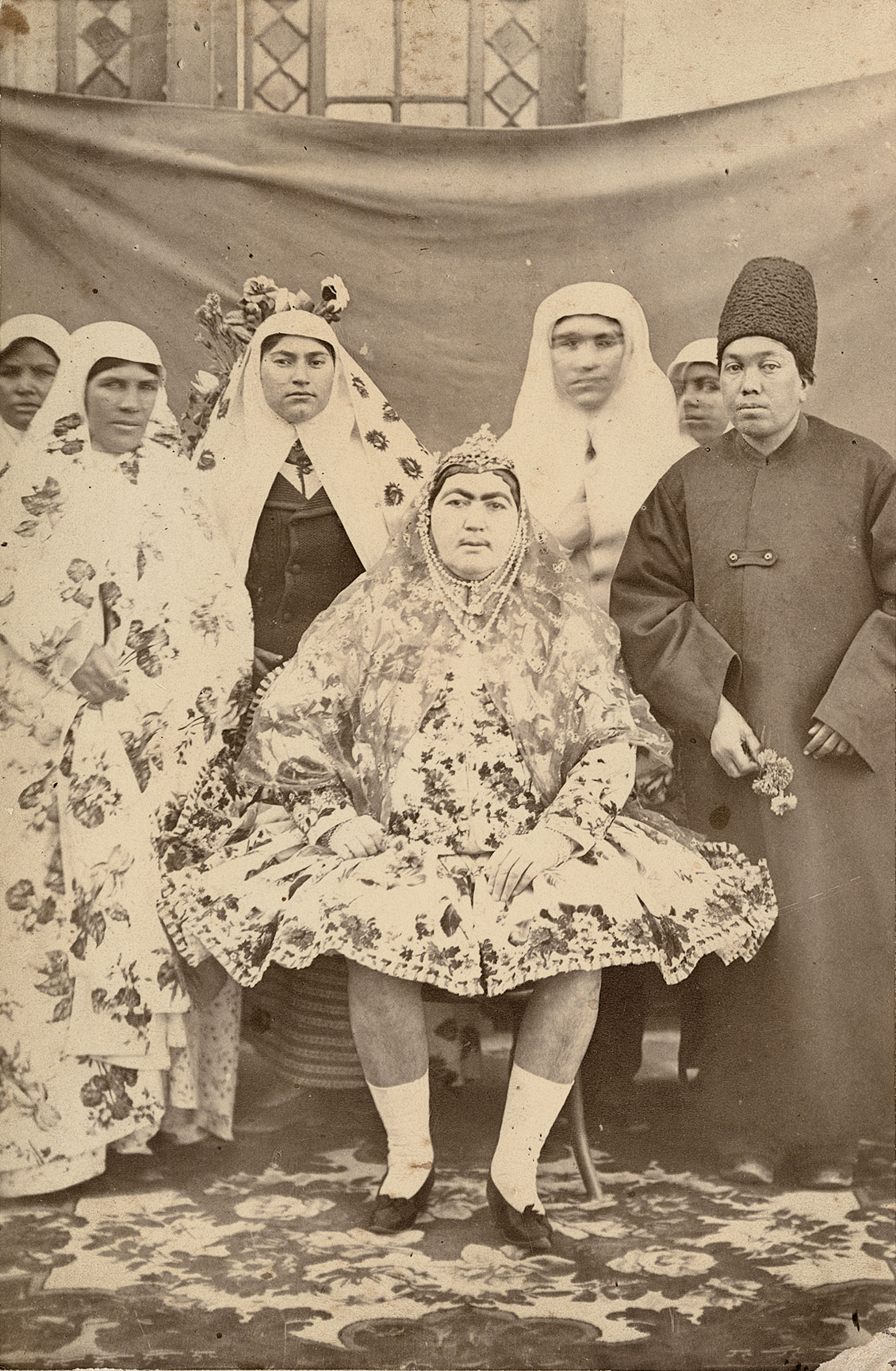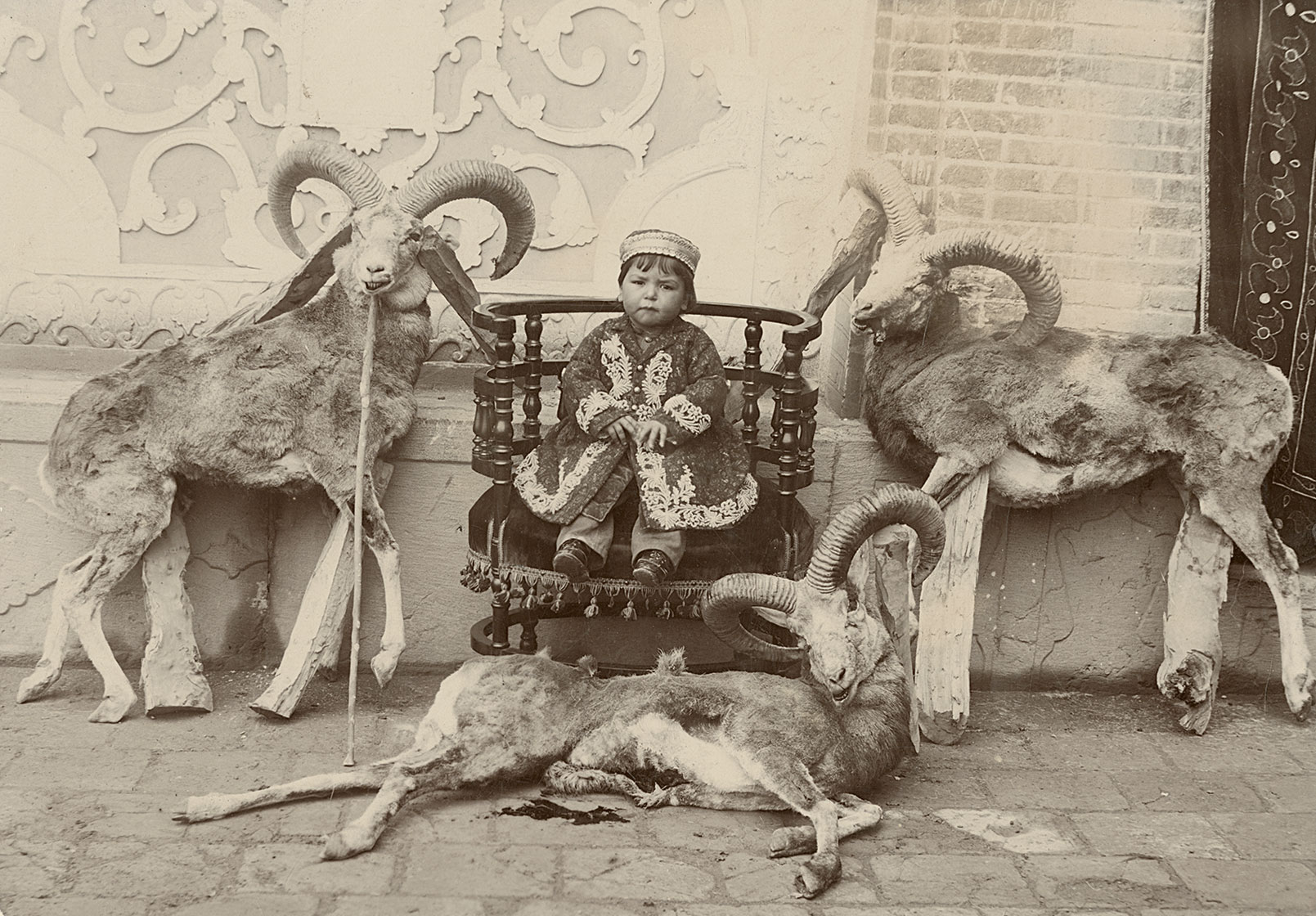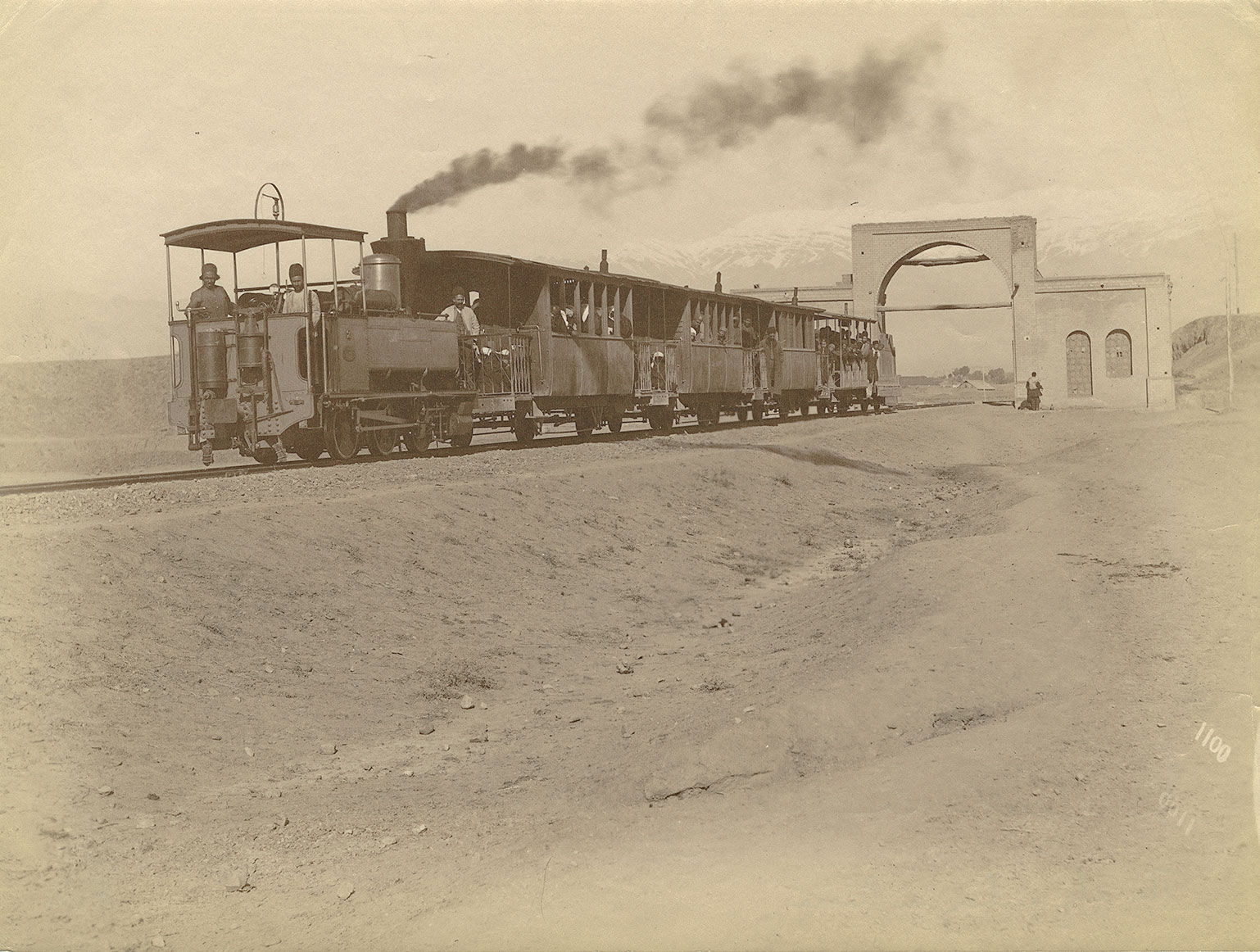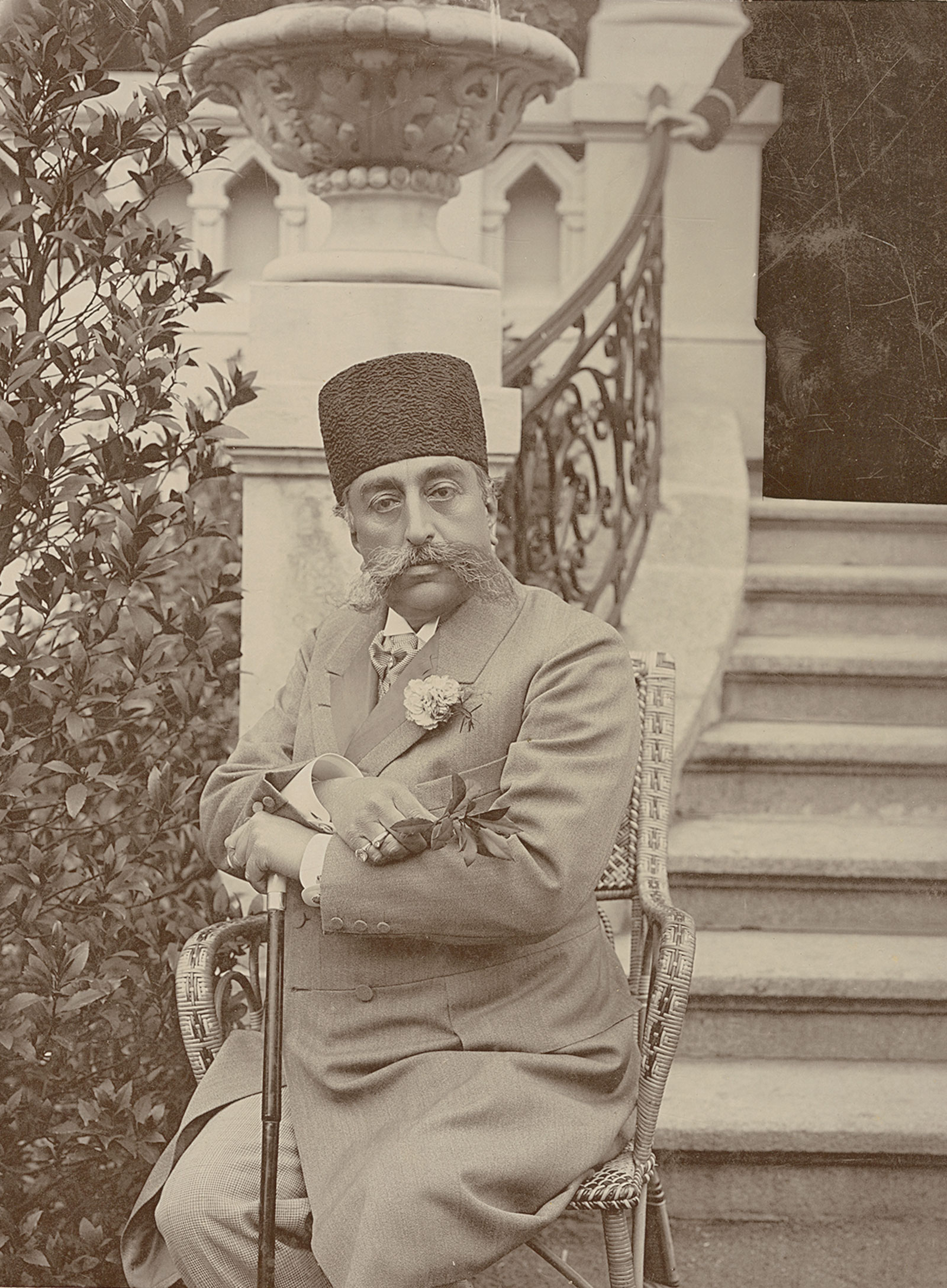Few of the representations of late-nineteenth-century Iran that are currently on display at New York University’s Institute for the Study of the Ancient World would win any prizes. Part of an exhibition called “Eye of the Shah: Qajar Court Photography and the Persian Past,” they have for the most part been composed with little wit or imagination and show individuals or small groups in not very inspiring locations. A number of them were shot in portrait studios with backdrops of classical balustrades and rotundas; some of them are badly faded. For harmony, crispness, and grandeur, they suffer in comparison to the commercial work done by Victorian photographers in the Middle East, such as Francis Bedford’s majestic, lonely studies of the Holy Land from 1862.
Yet the photographs in “Eye of the Shah” are filled with humanity: self-love, pretension, tyranny, hesitancy, and charm. The exhibition’s two hundred-odd images were executed for the most part by a small number of court and portrait photographers using an ultra-modern medium in a land still run according to the divine writ of kings, where the Shah’s harem contained hundreds of wives, concubines, and eunuchs, and many people continued to keep slaves. It’s in this confrontation—between the bastinado and the wet collodion method—that the principal interest of “Eye of the Shah” lies.
The Shah of the exhibition’s title was Naser al-Din, fourth monarch of the Qajar dynasty, who reigned from 1848 to 1896 and whose resistance to modernization was blemished only by his pursuit of European gadgetry. Naser al-Din came to photography in the 1850s—he was taught by a Frenchman—and while no piece in the exhibition can be firmly attributed to him, it seems likely that a few—particularly those of the harem—did indeed issue from the “Exalted Royal Photography Atelier.”
The otherwise useful catalog essays would have done well to explore the anachronistic position and odd personality of the Shah himself, because these aspects of his rule are helpful in appreciating what one is seeing. By the mid-nineteenth-century, forces of modernization were tugging Iran towards the kind of institutional change that was being pursued with some success in Turkey and Egypt—but the Shah himself was one of the main impediments. Apart from being an instinctive stick-in-the-mud, Naser al-Din’s monopoly over the government seems to have planted in his mind the notion that he need not behave with restraint or good sense; he murdered his first decent prime minister in 1852 and didn’t share power after that. After returning from one of his ruinously expensive trips to Europe, and apparently inspired by the Paris ballet, the Shah ordered the women of the harem to give up their traditional attire of long, voluminous, embroidered trousers in favor of a loose-sleeved jacket of the richest brocades above a species of knickerbocker, with the knees exposed and white socks rising half-way up the calf. This egregious combination, documented in a series of images in the New York show, remained the harem “uniform” for the rest of his reign.
Sartorial whimsy was bad enough, but the effects of the royal despotism were felt more painfully in his preferred parlour game, “lights out”—a veritable fusion of Breaking Bad and the Mad Hatter’s tea party. “My father,” as his daughter Tāj al-Salṭaneh recalled,
would sit on a chair near the light switch. As they [the women of the harem] were busy in their conversation, he would turn out the light. Suddenly all hell would break loose. Screams, cries for help, oaths, curses and wailing would be heard everywhere…amid this pandemonium of keening and wailing whose effect was heightened by the absolute darkness…the lights would suddenly come back on, catching everybody in some act. Usually the clothes would be ripped to shreds, the faces and cheeks bloody, the bodies obscenely exposed…the women’s faces were grotesque, their hair dishevelled, their eyes bloodshot and filled with rage…the session concluded, the poor women would scatter to go home, where they attended to their appearance until morning.
This, then, is the arbitrary, all-powerful Shah of the show’s title, and while there is no hint of “lights out” in the generally decorous portraits on display, “Eye of the Shah” nonetheless conveys the impression of an exotic, tawdry fin-de-siècle. In one of several photographs of the harem women in their ballet get-up, next to the Shah’s senior wife stands one of the eunuch slaves whose emasculation allowed them to move freely between the male and female quarters. In another photograph, two eunuchs, one severely stunted, are in a garden, holding themselves with pained dignity. Two other portraits show royal subjects, including the Shah’s toddler grandson, in the company of dead ibex that have been propped up to simulate a hunt; the effect is so removed from any modern idea of adornment or pleasure as to seem eerie.
Advertisement
Some of the most interesting photographs in the show were taken by Antoin Sevruguin, who was born in Iran to parents from the Caucasus, and who differed from most of the other photographers in that he travelled. His depiction of farrashes, or the camp attendants of merchants or pilgrims, carrying rolled up felt tents, evokes the tribal, transient existence of most Iranians at the time, while other mundane shots, of tea-pickers, bakers, camels resting at a way-station, and finally a criminal waiting to be bastinadoed, his bare feet fettered and bound to a pole, are important documents of pre-modern Iranian life.
In another work, a portrait of a black militiaman, presumably a slave of Nubian origin, testifies to the continued existence of human chattel despite an official ban on the maritime trade in 1848. There are other moments when the catalog fails to provide useful background. Sevruguin’s photograph of a three-carriage pleasure train only makes sense if one knows that it traveled a length of track just six miles long, linking Tehran and the capital’s favorite shrine; this was the sum total of the country’s railway network until well into the twentieth century. (The British and the Russians, effectively the only countries that could have built a railway in Iran, were each determined to prevent the other from raising its influence in Iran, and exercised a reciprocal veto on all railway projects.)
Sevruguin was also responsible for many of the images of antiquities that are included in the exhibition, among them the Achaemenid sites of Persepolis and Pasargadae. Taking their cue from their pre-Islamic forebears, the Qajars also trod hesitantly into the contentious area of human representation, executing rock-cut reliefs that commemorated their prowess in battle or the saddle. A photograph by Sevruguin of a bronze equestrian statue of Naser al-Din is important because the statue was disapproved of by the clergy and later melted down. Its lineage can be traced to an earlier statue of Egypt’s great modernizer, Muhammad Ali, in Alexandria, which in turn drew inspiration from the Bronze Horseman in St. Petersburg.
In the end the immobility that comes across in many of these photographs turned out to be deceptive. In fact, as we know now, the country was enjoying a final illusion of isolation before it was hurled into a fireball of revolutionary politics and great-power intervention. Naser al-Din would be the first victim, falling to an assassin’s bullet in 1896, and the show has two powerful photographs of his assassin’s execution by hanging, one of them showing the massed crowd and gibbet from a distance, and in front of that the silhouette of the photographer, his assistant, and the hooded camera itself.
After that the crown went to Nasser al-Din’s son Mozaffar al-Din. He too is represented in the show. In one shot he sits on a cane chair in Carlsbad, carnation in buttonhole, clutching a sprig of something, every inch the foppish tourist—except for the pillbox astrakhan, the tusk-like whiskers, and the worried look on his face. In 1906 a democratic uprising against his profligacy and reliance on foreigners forced this sickly, indecisive man to give up many of his powers to an elected parliament; while the harem closed down, the press exploded into life, and a new politics of rights and invective replaced the old one of servility and torpor.
Mozaffar al-Din died a week after he granted the country’s first constitution, and the following year his son and heir, the tyrannical Muhammad Ali (Naser al-Din’s grandson), destroyed parliament with the help of Russian bombardiers, as England winked from the sidelines. Iran had begun its struggle for true parliamentary democracy, its path blocked by the strongest nations on earth, and photography became fervently political. The lights were on.
“The Eye of the Shah: Qajar Court Photography and the Persian Past” is on view through January 17 at The Institute For the Study of the Ancient World in New York. A catalog of the show, edited by Jennifer Y. Chi, is published by Princeton University Press.


